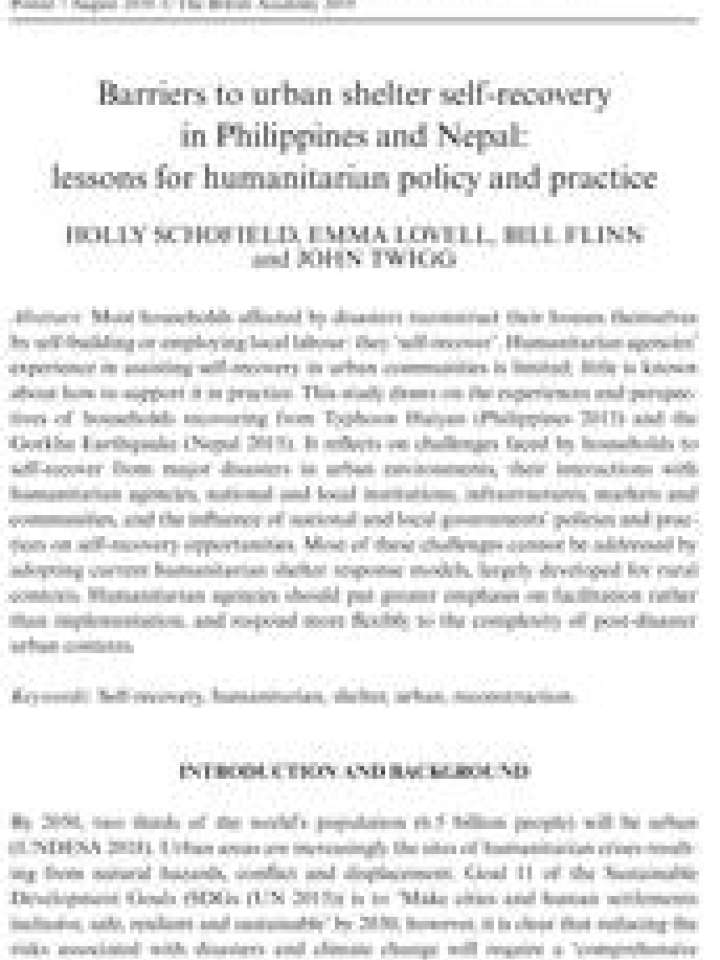Barriers to urban shelter self-recovery in Philippines and Nepal: Lessons for humanitarian policy and practice
Most households affected by disasters reconstruct their houses themselves by self-building or employing local labour: they ‘self-recover’. Humanitarian agencies’ experience in assisting self-recovery in urban communities is limited; little is known about how to support it in practice.
This study draws on the experiences and perspectives of households recovering from Typhoon Haiyan (Philippines 2013) and the Gorkha Earthquake (Nepal 2015). It reflects on challenges faced by households to self-recover from major disasters in urban environments, their interactions with humanitarian agencies, national and local institutions, infrastructures, markets and communities, and the influence of national and local governments’ policies and practices on self-recovery opportunities. Most of these challenges cannot be addressed by adopting current humanitarian shelter response models, largely developed for rural contexts. Humanitarian agencies should put greater emphasis on facilitation rather than implementation, and respond more flexibly to the complexity of post-disaster urban contexts.
Explore further
